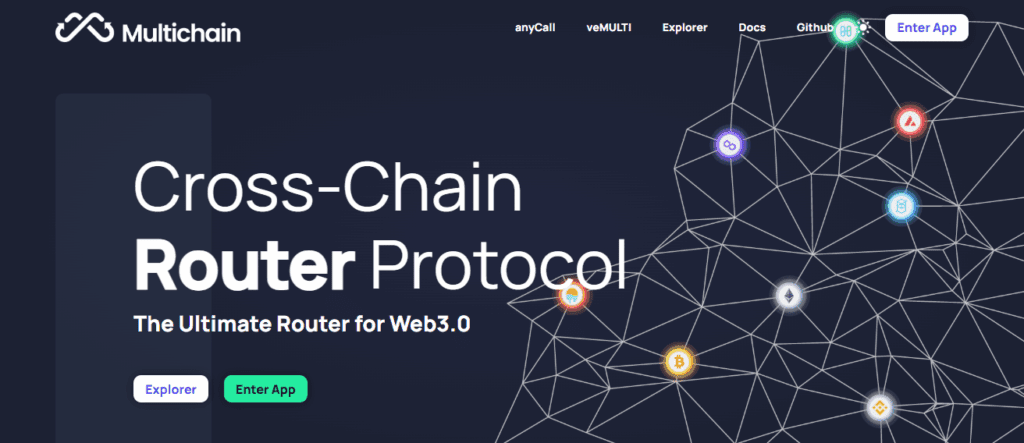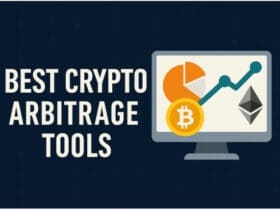This article discusses how to handle bridging aggregator downtime effectivey. Bridging aggregators are critical for seamless cross-chain crypto transfers, and unexpected downtimes can disrupt transactions, cost losses, and upset customers.
Here, I will discuss the first steps to take, alternative strategies, and steps to take to avoid risks to your asset and ensure that transfers are uninterrupted and your closed during bridging aggregator downtime.
What Are Bridging Aggregators?
Bridging aggregators consist of several blockchain networks and make cross-chain crypto transfers easier. People do not have to look for and make use of different bridges for a single blockchain.
People, instead, turn to a bridging aggregator to send their assets on the most efficient and cost-effective routed path.
The aggregators work to gain the best transaction speeds, and rates, and to lower errors and waiting times.
They are most beneficial to decentralized finance (DeFi) where assets require cross-chain movement.
People have access to several bridging options via a single interface which increases their convenience, dependability, and the overall ease of use.
How To Handle Bridging Aggregator Downtime
Illustration: Downtime on Multichain

Stop New Transactions
Until the aggregator states that it is functional again, refrain from starting any transfers. This saves you from having to deal with transactions that might resolve themselves stuck, and saves you having to deal with expensive and time-consuming support.
Look for Updates on Official Channels
Go to Multichain’s status site, check their social media, and Discord server for the latest information. Read any notifications and keep an eye on the maintenance status, network issues, and any resolution time estimates.
Track Transactions
Go to a blockchain explorer and check the status of any transfers that have been started. Determine whether the transactions are stuck, completed, or failed.
Evaluate Other Options
If the transfer is time sensitive, you may use a different bridging aggregator or compatible wallet that offers direct cross-chain transfers. This way, you won’t have to wait for the downtime to be over.
Notify Stakeholders
Explain to users or the receivers that they may experience unforeseen delays. Offer transfer completion estimates that are feasible.
Analyze and Make Improvements
After the system is functional again, analyze the reason for the downtime and create a plan to cover it for the future.
Why are They Vulnerable?
Dependence on Multiple Blockchains: Each bridging aggregator links different blockchains, with their unique cascading network stability issues, as well as congestion.
Smart Contract Risks: The automating of cross-chain transfers, as well as the execution of bridging aggregators contracts, relies on smart contracts.
Centralized Infrastructure Points: Coordinated transfers are the collaborators of some aggregators, who will, as a result, set up centralized servers or relayers.
Liquidity Constraints: All connected chains need to be supplied with liquidity in order to complete transactions seamlessly.
External Attacks or Exploits: Exploits, attacks on a network, and front-running exploits are all means to cause aggregators to perform emergency shutdowns.
Impact of Downtime
Financial Loss: Missed transactions and revenue while critical business disruptions risk penalties.
Operational Disruption: Core processes halt, delaying services and blocking access to vital information.
Reputational Damage: It perceived unreliability. Negative reviews circulates and trust is lost.
Customer Dissatisfaction: Increased frustration and churn risk when actions cannot be completed.
Compliance Issues: Interrupting transactions or data flows breaches regulations and compliance issues.
Immediate Steps to Take During Downtime
Pause all operations There’s no need to incur further losses. Unplug all bridging activities on your end to avoid stuck or stranded balances.
Check aggregator communication channels You won’t need to manually—or gradually—take any action. Just keep an eye on their Twitter petitions, Discord, and aggregator Status to see if any updates.
Check the wallet’s history Aggregators are usually built to simplify activities, but sometimes they fail. You will need to identify the stuck or failed activities for shifting in a wallet.
Collect all relevant information It’s important to add or collect all the elements to a request. You won’t need to pick and join any communication—get direct to support.
Switch to other trusted bridges You can replace the addresses for other bridging. It is advisable to have them as a backup and keep them aligned to not break networks in bridging.
How To Prepare for Future Downtime

Sign Up for Alerts
Subscribe to aggregator channels on Discord, Telegram, or email newsletters. Get real-time alerts on maintenance, outages, and unplanned downtimes.
Learn the Other Options
Look for and note reliable standalone bridges, such as Stargate or Synapse. Save them to your bookmarks for easy access in case the main aggregator is down.
Keep Some Liquidity on Different Chains
Keep a little liquidity in stablecoins or primary gas tokens (ETH, MATIC, etc.) Make sure you have them on different chains for emergency transfers, and ensure they are easy to reach.
Store Relevant Information
Document transaction IDs, the bridges you used, and the wallet addresses, as well as pertinent support or contact info. Save your issue-related info in a secure note for easy access.
Practice Direct Bridging
Get used to the independent bridges that are outside of the aggregator. Make sure you can switch readily to a different method in case of downtimes.
Avoid Critical Transfers During Peak Hours.
Move scheduled non-urgent transactions to periods that have low network congestion. This minimizes the chances of coming into congested periods where delays or failures are more likely.
Alternative Solutions During Downtime
When bridging aggregators are turned off, it does not mean that transactions have to stop completely. As a matter of fact, there are still several ways of crossing chains with a few limitations in functionality.
Using Native Bridges: Some blockchains have their own bridges, which are “officially recognized” like the Arbitrum Bridge, the Polygon PoS, and the Optimism Gateway Bridges. These will not have the aggregation benefits, but will most likely be more dependable as these are managed by the networks themselves.
Using Other Bridging Aggregators: Other bridging aggregators are likely to be working while some are down. Rango, Jumper Exchange, and Socket are examples. Always confirm the compatibility of the source and destination chains before you proceed.
Using CEXs: Even if the DeFi bridges are not available, CEXs can still serve as temporary bridges. It does take more effort, and will involve KYC protocols, and the bridging will occur on opposite chains, but deposits and withdrawals can be processed. Examples of these CEXs are Binance, Kraken, and Coinbase.
Risk Management and Safety Tips
Start With Small Transfers: Before moving larger amounts over chains, do a test run with a smaller amount.
Verify Chain and Token Information: Double-check to confirm that you are bridging the correct token for the supported networks.
Transaction Confirmations: You should check and confirm every step of the bridging process using block explorers and the aggregator dashboards.
Using Hardware Wallets Is Safer: To ensure the safety of your assets, bridge with secure wallets like Ledger and Trezor.
Be Aware of Phishing: Use aggregate platforms only through official links. These should be saved to bookmarks, not random links.
Check Bridge Fees and Slippage: To prevent unexpected losses, you should check for these and any other unexpected expenses.
Keep Your Eyes Open: Watch the aggregator’s community channels for important information and updates, bugs, and scams
Pros And Cons
| Pros | Cons |
|---|---|
| Minimizes Financial Loss – Pausing transactions prevents failed transfers and stuck funds. | Time-Consuming – Monitoring status pages, checking wallets, and switching bridges requires effort. |
| Improves Operational Control – Clear steps ensure smooth management during outages. | Requires Preparation – Must pre-identify alternative bridges and maintain liquidity on multiple chains. |
| Reduces Reputational Damage – Communicating transparently keeps users informed and maintains trust. | Limited Options – Not all alternative bridges support the same assets or chains. |
| Enhances Customer Satisfaction – Proactive updates and backup plans reduce frustration during downtime. | Risk of Errors – Switching manually between bridges can cause mistakes if users are unfamiliar. |
| Strengthens Compliance – Proper tracking and documentation maintain regulatory and SLA adherence. | Partial Solution – Downtime still causes delays; it cannot fully eliminate interruptions. |
| Builds Long-Term Resilience – Regular practice with backups and alternative bridges prepares for future outages. | Resource Intensive – Maintaining multiple wallets, liquidity, and monitoring tools increases operational overhead. |
Cocnlsuion
As for the Conclusion Handling bridging aggregator downtime entails preparation, vigilance, and prompt action.
Users can mitigate financial, operational, and reputational risks by pausing transactions, monitoring official channels, tracking pending transfers, and utilizing trusted alternative bridges.
Proactive measures such as maintaining liquidity, direct bridging, and alert systems are effective in smoothing cross-chain operations and lessening the impact of unplanned aggregator outages.
FAQ
A platform that simplifies cross-chain crypto transfers by connecting multiple blockchains.
Downtime can occur due to network congestion, smart contract issues, maintenance, or attacks.
Monitor official status pages, Twitter, Discord, or community updates for outage notifications.
Pause transactions, check pending transfers, collect transaction details, and monitor official updates.
Yes, switch to trusted standalone bridges that support your required chains.














